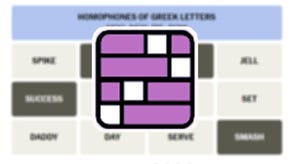RTX 2060 vs GTX 1070 and RTX 2060 vs GTX 1070 Ti: 1080p, 1440p and 4K benchmarks
Welcome to the new mid-range graphics showdown.
Here's an uncontroversial statement: the RTX 2060 is a convincing upgrade over the GTX 1060 it nominally replaces: significantly better raw performance, new real-time ray tracing capabilities and a long list of new and improved features. The only issue? The RTX 2060 is $100 more expensive than the GTX 1060 at $350, meaning its closest competitors ought to be the cards that it actually competes with on price: the GTX 1070 and GTX 1070 Ti. That's where this article comes in, as we try to settle the argument of which of the three Nvidia cards is the best for the money.
To do this, we'll look at how the RTX 2060, GTX 1070 and GTX 1070 Ti handle games at 1080p, 1440p and 4K, including recent and major releases like Assassin's Creed Odyssey, Shadow of the Tomb Raider and Far Cry 5. We'll also give our view on whether new features like RT and DLSS are worthwhile additions. The last section is all to do with the cards' current pricing and availability, and how they affect our recommendations.
Click the links below to jump to one of these parts directly, or scroll on to see it all!
- RTX 2060 vs GTX 1070 vs GTX 1070 Ti: Features
- RTX 2060 vs GTX 1070 vs GTX 1070 Ti: Benchmarks
- RTX 2060 vs GTX 1070 vs GTX 1070 Ti: Price
Thinking about upgrading your gaming PC? Take a look at our recommendations for the best graphics cards on the market. Pairing your graphics card with one of the best gaming monitors is also important, so check out our latest picks!
You can also take a look at how the RTX 2060 compares to the new kid on the block in our GTX 1660 Ti vs RTX 2060 benchmarks.
RTX 2060 vs GTX 1070 vs GTX 1070 Ti: Feature comparison
Deep learning super-sampling (DLSS)
DLSS is perhaps the most exciting feature to debut with Nvidia's Turing cards, thanks to its promise of significant frame-rate boosts in exchange for a minor downgrade in visuals. Whether used to maximise frame-rates or to offset the extra performance cost of real-time ray tracing, DLSS definitely has potential. We've already produced an in-depth discussion of DLSS but essentially this new feature works by rendering a lower-resolution image which is then upscaled by an efficient deep learning algorithm which has been fed high-res images of the game in question. This allows the RTX hardware to deliver a final image that looks similar to the standard full-size image using around 50 per cent of the shading power, but it does require that Nvidia built out support game by game. Thus far, DLSS has seen limited adoption, but as we continue into 2019 it will hopefully become a more prevalent standard.
So how much extra performance can you expect from games that do support the standard? One example is the Final Fantasy 15 benchmark provided by Nvidia, which perhaps shows a best-case scenario for the technology as we compare results with traditional TAA and DLSS. The RTX 2060 jumps from 23fps average to 32fps, just a hair behind the GTX 1080 Ti. That nearly 40 per cent leap is in line with the relative boost experienced by the RTX 2080 and 2080 Ti, showing that the tech works well across the RTX lineup. With some early DLSS implementations looking worse than an actual drop in resolution, Nvidia will have to continue improving this feature to make it a real selling point for these cards. DLSS could become the RTX 2060's secret weapon that allows it to challenge the GTX 1080 and even the GTX 1080 Ti in some titles - but DLSS has to be implemented better and be available in more games.
Final Fantasy 15 demo: TAA vs DLSS
Real-time ray tracing
Of course, when it comes to features we'd be remiss not to mention the whole reason that Nvidia have shifted from GTX to RTX branding: real-time ray tracing. Ray tracing refers to a process of simulating light as it bounces realistically around a scene, allowing for greater graphical fidelity through lights and shadows that appear more realistic. As well as upgraded visuals, this can have gameplay implications - with RT, you can see around corners using reflections, something that isn't possible with traditional techniques that mimic reflections by using only the player's viewpoint.
Unfortunately, even with the dedicated hardware on board the RTX cards, ray tracing in real time still incurs a heavy performance penalty and uses up a ton of video memory. We have seen from the updates to Battlefield 5 that this penalty can be minimised through smart coding, but it is still significant. To get an idea of how ray tracing affects the RTX 2060 specifically, you can take a look at our Battlefield 5 vs RTX 2060 ray tracing analysis article. You can also see how RTX is implemented in another recent game, Metro Exodus, below.
Turing architecture: new rendering features
As well as the inclusion of RTX and DLSS, Nvidia's Turing GPUs include other feature improvements over their predecessors. Variable rate shading is one remarkable inclusion, as this tech reduces processing on scene elements that don't require so much attention. On its most aggressive setting, that can result in frame-rate boosts of around 15 per cent based on our testing in Wolfenstein 2: The New Colossus. All of these technologies are potentially exciting for VR too.
Speaking of VR, some RTX 2060 models also include a single USB-C port that supports the new VirtualLink standard. That means you'll be able to connect future VR headsets with just a single USB-C cable, rather than the usual awkward HDMI and USB 3.0 cat-o'-nine-tails. DisplayPort 1.4a is also included, just in case your single-cable fetish stretches to hooking up an 8K 60Hz display with just one cord.
Finally, content creators like streamers and YouTubers will be able to make use of an upgraded NVENC encoder which allows for higher resolutions and supports a wider range of video standards. More importantly, the new version of the encoder provides better quality with less CPU utilisation, opening the door to 4K streaming on mainstream PC setups - which is particularly exciting for RTX 2060 owners who are perhaps more likely to be using a low or mid-range PC.
Finally, it's worth mentioning what you'll get on both cards. G-Sync, including G-Sync Ultimate and G-Sync Compatible, is supported by both generations, giving you a wide range of variable refresh rate monitors to choose from. You'll also have the option of GeForce experience software, including easy options for streaming and recording gameplay through ShadowPlay. Nvidia cards are more popular than their AMD counterparts, so by and large you'll find all three of the GeForce cards we're considering are well supported with aftermarket accessories, online help forums and so on - with the obvious proviso that the RTX card is newer, so its ecosystem is understandably smaller.
RTX 2060 vs GTX 1070 vs GTX 1070 Ti: Game benchmarks
Our new benchmark system was implemented in early 2018, but it's still worth explaining it briefly if you haven't seen it before. The idea is to provide dynamic benchmarks rather than static bar charts or videos, so that you can see the information that's of most interest to you. Just press play on the YouTube videos below, then add or remove the video cards and resolutions you're interested in using the controls to the right of the video. For example, you might want to see how two cards compare at different resolutions, or how four cards compare at the same resolution. You'll see how the data sources you picked handle our test scene, with real-time frame-rate and frame-time information that give a better idea of the gameplay experience than a simple average frame-rate. However, you can also scroll down a little to see a bar chart with averages if you prefer. Mouse over the chart to see more data and click to switch between fps counts and percentages. With that explanation out of the way, let's get started!
Assassin's Creed Odyssey
Let's start with one of our most recent games, Assassin's Creed Odyssey. This game has a useful integrated benchmark and can be a challenging title to run at 60fps, even at 1080p resolution, thanks to its open world design and incredibly detailed texture work. Both the GTX 1070 Ti and RTX 2060 are just shy of a 60fps average here, with the GTX 1070 sitting in third place with a 15 per cent slower frame-rate. The RTX 2060 is stronger at 1440p, but the GTX 1070 Ti rallies at 4K - perhaps as the RTX card's smaller 6GB of VRAM is filled up. Ultimately though, only 1080p and 1440p are really playable at this ultra high preset with temporal anti-aliasing.
AC Odyssey: Ultra High, TAA
Assassin's Creed Unity
Ubisoft have been making graphically demanding Assassin's Creed titles for a long time too, as this 2014 title shows. The GTX 1070 Ti and RTX 2060 are neck and neck here, with the latter card barely claiming the victory at each resolution by a few frames per second. Meanwhile, the GTX 1070 is behind by 10 per cent at 1080p, then 13 per cent at 1440p and 4K.
Assassin's Creed Unity: Ultra High, FXAA
Battlefield 1
2016 release Battlefield 1 is a much easier game to render, even in the frantic singleplayer level we've opted to show at ultra settings. All three cards are above 100 fps at 1080p, allowing them to make use of a high refresh rate 1080p monitor. There is a pretty big difference between the three cards though, with the GTX 1070 Ti leading the GTX 1070 by 10 per cent, and the RTX 2060 ahead of the GTX 1070 Ti by 13 per cent. That makes for a significant 22 per cent gap between the first and last place cards at 1080p. These gaps close as resolution increases, but the RTX 2060 remains in first place over its GTX rivals throughout with 102fps at 1440p and 56fps at 4K - an impressive result!
Battlefield 1: Ultra, TAA
Crysis 3
It wouldn't feel right to test a video card without examining performance in Crysis, so that's exactly what we're going to do. The GTX 1070 Ti shows its chops in this older game, with the RTX 2060 not being able to rely on modern methods to boost its frame-rate. The gap is hardly massive, running between one and three per cent, but it's the first time that we've seen the RTX 2060 behind the GTX 1070 Ti at every resolution we tested. Once again, the GTX 1070 is about 10 per cent behind its competitors throughout.
Crysis 3: Very High, SMAA T2X
Far Cry 5
Normalcy is restored in Far Cry 5, another recently-added benchmark to our testing suite. The RTX 2060 leads the GTX 1070 Ti by around two per cent at each resolution, with the GTX 1070 around 13 per cent behind the RTX card at each resolution. With the RTX 2060 and a suitable processor - we're using an overclocked Core i7-8700K in our test rig - you should expect excellent 1080p performance of around 110fps, comfortably above 75fps at 1440p and even a somewhat playable ~40fps at 4K in this title even at ultra settings.
Far Cry 5: Ultra, TAA
Ghost Recon Wildlands
Ghost Recon Wildlands is another open world title, but one that's far harder on CPU and GPU alike when using the ultra preset. Once again, the RTX 2060 leads the GTX 1070 Ti by a narrow margin, with the GTX 1070 following about 12 to 13 per cent behind at each of the three resolutions we tested. However, we'd recommend targeting high or very high to achieve playability at anything above 1080p on any of these graphics cards.
Ghost Recon Wildlands: Ultra, TAA
Rise of the Tomb Raider
Rise of the Tomb Raider marks the second time where the GTX 1070 Ti has eclipsed the RTX 2060, with the older higher-tier card scoring wins at 1080p, 1440p and 4K. Once again, the margin of victory is narrow - two or three per cent - but it's there. The GTX 1070 faces a bit of a struggle with the game, coming 14 per cent behind at the lower resolutions and 16 per cent behind at 4K. Note that the game itself is actually harder to run than this benchmark would indicate, so take this more of a measure of relative performance than the frame-rates you would expect to find in-game with a similar setup.
Rise of the Tomb Raider: Very High, SMAA
Shadow of the Tomb Raider
Shadow of the Tomb Raider's integrated benchmark is a more faithful recreation of actual gameplay, making it harder to run than its 2016 predecessor. The 2018 game has the RTX 2060 take a lead once more; it seems like the newer card works better in more recent games, while the GTX 1070 and 1070 Ti are relatively better in older titles which makes some sense. The RTX 2060 delivers 95fps at 1080p, eight per cent ahead of the GTX 1070 Ti and 17 per cent ahead of the vanilla GTX 1070. These margins remain more or less constant at 1440p and 4K.
Shadow of the Tomb Raider: Highest, TAA
The Witcher 3
The Witcher 3 is another game that you could run nicely on a high refresh rate 1080p monitor, with the RTX 2060 managing to deliver 116fps average despite a much lower worst one per cent score than its competitors. That's four per cent faster than the GTX 1070 Ti and 13 per cent faster than the GTX 1070 at 1080p. All three cards offer playable frame-rates above 60fps at 1440p, with 4K results dropping to around 40fps.
Witcher 3: Ultra, Post-AA, No Hairworks
Wolfenstein 2: The New Colossus
We conclude with the most recent Wolfenstein release, running at the uber preset. The RTX 2060 can basically max-out a 144Hz monitor at 1080p, with an average frame-rate of 140fps, with the GTX 1070 Ti and GTX 1070 behind by eight per cent and 20 per cent, respectively. This game also supports the Variable Rate Shading (VRS) feature supported by RTX cards, which can add another 15 per cent performance to the RTX 2060 at its most aggressive setting.
Wolfenstein 2 Vulkan: Uber, TSSAA 8X
RTX 2060 vs GTX 1070 vs GTX 1070 Ti: Price and availability
The RTX 2060 is widely available following its launch in late 2018, with the cheapest cards coming in at $350 in the US and £300 in the UK. The GTX 1070 is also generally available, although stock levels do appear to be drying up on some models. Most US retailers are charging $330 for entry-level GTX 1070 cards, while the prices are closer to £230 in the UK. Meanwhile, the GTX 1070 Ti is a little more expensive and a little harder to find, with new entry-level cards going from around $380 in the US and £395 in the UK.
| Price | Availability | |
|---|---|---|
| GTX 1070 | $330 / £230 | Good |
| RTX 2060 | $350 / £300 | Excellent |
| GTX 1070 Ti | $450 / £390 | Limited |
Given the strong advantage that the RTX 2060 shows over the GTX 1070 (and often the GTX 1070 Ti) in raw performance and the potential for new technologies like RT and DLSS, the new model seems like the better deal. Even though the RTX 2060 comes with slightly less VRAM than the GTX 1070, its memory is faster and the card is stronger overall. That's why we're recommending the RTX 2060 as one of the best graphics cards on the market. However, if features like DLSS and RTX don't appeal to you and you can find a GTX 1070 or GTX 1070 Ti at a reduced price, a 10-series card still could be a good short-term option.
Want to read more? Check out our full RTX 2060 review and our RTX 2060 benchmarks to see the full Digital Foundry verdict on Nvidia's latest graphics card plus detailed comparisons with a wider range of GPU competitors.










